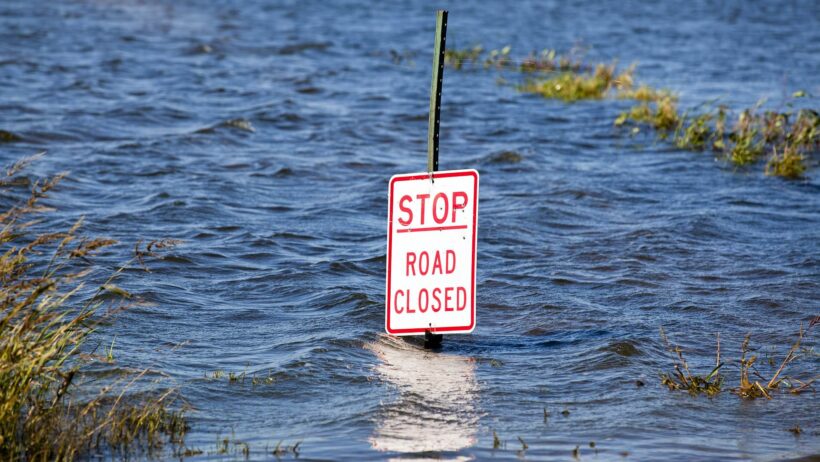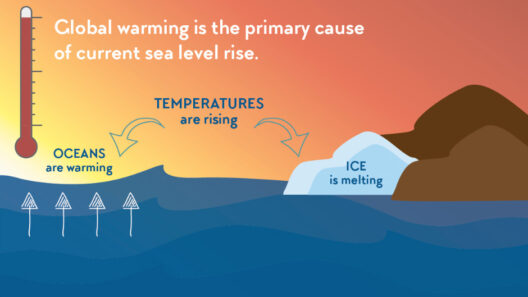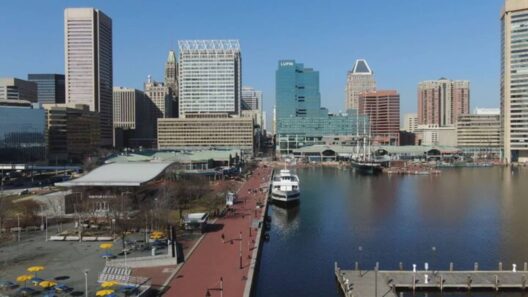Climate change is a pressing global concern, manifesting in myriad forms, one of the most alarming being rising sea levels. This phenomenon, driven primarily by the thermal expansion of sea water and the melting of glaciers and polar ice caps, threatens coastal habitats, freshwater supplies, and human settlements alike. To mitigate the potential catastrophe that rising sea levels pose, a multifaceted approach must be taken, encompassing innovative strategies ranging from legislative action to technological innovation.
As we delve into the various solutions to this impending crisis, it’s essential to consider the interconnectedness of these methods, as no single solution can effectively combat this complex issue. This exploration will unveil pathways we can take to ameliorate the challenges posed by rising waters.
The Role of Renewable Energy in Curbing Emissions
A pivotal factor in vying against rising sea levels is the reduction of greenhouse gas emissions. The combustion of fossil fuels releases significant amounts of carbon dioxide and methane into the atmosphere, accelerating global warming. Transitioning to renewable energy sources such as solar, wind, and hydroelectric power is crucial for diminishing these emissions.
The proliferation of renewable energy systems not only decreases dependence on fossil fuels but also fosters economic growth and job creation in the green sector. By investing in solar farms and wind turbines, we can harness the planet’s natural resources while contributing to a more sustainable future. Furthermore, enhancing energy efficiency in buildings and industries can lead to substantial cuts in emissions, amplifying our efforts against climate change.
Innovative Carbon Capture Technologies
Emerging technologies focused on carbon capture and storage (CCS) represent another promising avenue in combatting rising sea levels. CCS involves capturing carbon dioxide emissions at their source, such as power plants, and storing it underground to prevent its release into the atmosphere.
Such technologies have the potential to significantly lower the amount of greenhouse gas emissions. Currently, researchers are exploring direct air capture systems, which can extract carbon dioxide from the ambient air, subsequently converting it into benign products or storing it underground. While still in developmental stages, these technologies could play an instrumental role in achieving net-zero emissions and, by extension, curbing the alarming rise in sea levels.
Restoration of Coastal Ecosystems
In addition to mitigating emissions through technology, we must also look towards nature for solutions. Coastal ecosystems, such as mangroves, salt marshes, and coral reefs, act as natural barriers against the encroaching sea. They absorb wave energy and mitigate erosion, providing a buffer for inland areas.
Restoring and preserving these ecosystems is vital in our efforts to adapt to and mitigate rising sea levels. Initiatives focused on reforesting mangroves and restoring wetlands can enhance biodiversity, improve water quality, and even strengthen community resilience against storm surges. These natural solutions not only restore ecological balance but also provide myriad social and economic benefits to local communities.
Urban Planning and Infrastructure Resilience
Adaptation strategies are equally essential as we face the realities of rising tides. Urban planning must integrate resilient infrastructure that acknowledges and prepares for potential flooding. Building codes that require elevated construction in flood-prone areas, the implementation of green roofs, and the development of permeable pavements are crucial steps that cities can take to mitigate flood risks.
Moreover, investing in sea walls and levees can serve as protective barriers for coastal cities. However, these engineering solutions require reassessment over time as they can lead to habitat degradation and may not be sufficient against extreme weather events exacerbated by climate change.
Community Engagement and Awareness
While technical and infrastructural solutions are paramount, raising community awareness and fostering engagement are indispensable components of this multifaceted approach. Education plays a pivotal role in empowering individuals and communities to take actionable steps toward reducing their carbon footprints.
Public awareness campaigns can galvanize support for policy changes, such as incentivizing renewable energy installations and advocating for preservation funds for coastal habitats. Engaging communities in local conservation efforts not only fortifies resilience but also cultivates a sense of stewardship that is necessary for long-term sustainability efforts.
Policy Advocacy and International Cooperation
Finally, tackling the issue of rising sea levels demands robust policy frameworks and international cooperation. Governments must enact and enforce legislation aimed at curbing emissions, protecting ecosystems, and investing in renewable technologies. Collaborative agreements, akin to the Paris Agreement, are vital in ensuring that nations unite in combating this existential threat, as climate change knows no borders.
Nations must prioritize funding for climate adaptation strategies, particularly in developing countries that may lack the resources to combat the effects of rising sea levels. Addressing social inequities in climate funding is crucial, as marginalized communities often bear the brunt of climate impacts. By working together, nations can foster a global environment that nurtures collective responsibility towards the planet.
In conclusion, while rising sea levels pose a significant threat to our world, a confluence of innovative technologies, community engagement, ecological restoration, and policy advocacy holds the potential to stave off further escalation. It is imperative that we adopt a holistic approach—one that considers both mitigation and adaptation—to create resilient societies capable of weathering the challenges posed by climate change. The time to act is now, as the solutions we champion today will shape the coastal landscapes of tomorrow.







